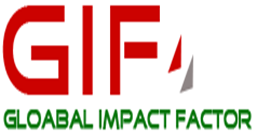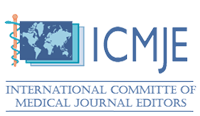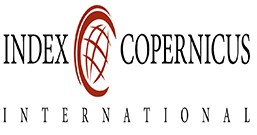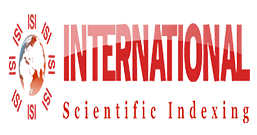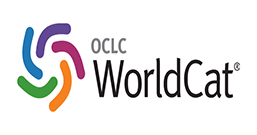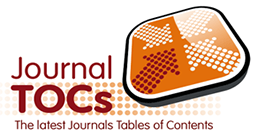Health Literacy, Social Determinants of Health, and Disease Prevention and Control
Steven S. Coughlin1,2*, Marlo Vernon3,4, Christos Hatzigeorgiou4, Varghese George1
Affiliation
1Department of Population Health Sciences, Medical College of Georgia, Augusta University, Augusta, GA
2Institute of Public and Preventive Health, Augusta University, Augusta, GA
3Georgia Cancer Center, Augusta University, Augusta, GA
4Department of Medicine, Medical College of Georgia, Augusta University, Augusta, GA
Corresponding Author
Dr. Steven Coughlin, Professor, Department of Population Health Sciences, Medical College of Georgia, Augusta University, 1120 15th Street, Augusta, GA 30912; E-mail scoughlin@augusta.edu
Citation
Coughlin, S.S., et al. Health Literacy, Social Determinants of Health, and Disease Prevention and Control. (2020) J Environ Health Sci 6(1): 1-3.
Copy rights
© 2020 Coughlin. S.S. This is an Open access article distributed under the terms of Creative Commons Attribution 4.0 International License.
Introduction
Health literacy has been defined as the “degree to which individuals have the capacity to obtain, process and understand basic health information and services needed to make appropriate health decisions” (Nielsen-Bohlman et al., 2004). Low health literacy is associated with more hospitalizations, greater use of emergency care, decreased use of preventive services, poorer ability to interpret labels and health messages, poorer health status, higher mortality, and higher health care costs (Berkman et al., 2011). Functional health literacy extends beyond proficiency in reading, writing, and numeracy to include interpretation of images and oral communication (Magnani et al., 2018; Ousseine 2019). Communicative health literacy is essential to abstract skills such as evaluating and weighing treatment considerations and engaging in medical decision-making (Magnani et al., 2018; Ousseine 2019). Low health literacy negatively impacts disease self-management and individual health behaviors such as adherence with weight control and tobacco cessation interventions and cancer screening recommendations (Weiss & Smith-Simone, 2010; Bennett et al., 2009). Individuals with low health literacy are more likely to present with advanced illness, resulting in delayed diagnosis and treatment and poorer outcomes (Aljassim & Ostini, 2020).
Health literacy is recognized not only as an individual trait or risk factor for poorer health outcomes, but also as an asset or characteristic related to families, communities, and organizations that provide health and social services (Batterham et al., 2016). Viewed as an asset, health literacy offers a means to empower individuals and communities to exert greater control over their health (Aljassim & Ostini, 2020; Nutbeam, 2008).
Nevertheless, many individuals are unable to comprehend or act upon health information because of limited health literacy (Fleary & Ettienne, 2019). The National Assessment of Adult Literacy Survey found that 36% of U.S. adults had basic or below-basic health literacy (Magnani et al., 2018). In the U.S., non-whites are more likely to have limited health literacy than whites (Mantwill et al., 2015; Berkman et al. 2011; Kutner et al., 2006). Low socioeconomic status, particularly low educational attainment, is the most important determinant of health literacy (Stormacq et al., 2019; Garcia-Cordina et al. 2019). Lower health literacy is associated with income and education (von Wagner et al., 2007; Paasche-Orlow et al., 2005). Rates of limited health literacy are also higher among elderly persons and among non-native English speakers (Berkman et al., 2011; Fleary & Ettienne, 2019).
Shared decision making (SDM) is often heralded as a key component of patient-centered health care, but effective patient and provider communication relies on a degree of health literacy. Patients must be able to understand and process medical information in order to make informed decisions about their health care. Interventions which incorporate simple design, plain language, and graphic displays have made improvements in SDM in disadvantaged populations to a greater degree than those with higher literacy (Durand 2014). Other research proposes that information which is appropriately designed and culturally competent could contribute to reductions in cancer and other health disparities (Polaceck 2007, Hawley 2017).
Health literacy is an important factor in disease prevention and control (Amalraj et al., 2009; Davis et al., 2002; Halverson et al., 2013). Adults with limited health literacy obtain less information from disease prevention and control materials, and may be less likely to undergo screening or to successfully manage their illness. For example, health literacy is associated with obesity, dietary choices, and exercise (Magnani et al., 2018). Women with low health literacy are also associated with a lower probability of mammography screening; they are also more likely to report poorer physician-patient communication and higher levels of decision regret in regard to their breast cancer decisions (Berkman et al., 2011; Durand 2020). Low health literacy is also associated with having an inadequate understanding of complex medical information (Davis et al., 2002; Halverson et al., 2013). Patients’ understanding of their disease, treatment, and healthcare decision-making can be impaired by low health literacy (Halverson et al., 2013).
Health literacy is associated with other determinants of health (e.g., education, income, area-based measures of social disadvantage, and access to healthcare) that are key to the success of disease prevention and control efforts aimed at health disparities (Simmons et al., 2017). Interventions that improve health literacy may empower individuals and communities to take action on social and economic determinants of health at both the individual and community level. Improvements in health literacy are likely to result in improved utilization of preventive services, medical adherence, and involvement in health decision-making (Fleary & Ettienne, 2018). Effective interventions to improve health literacy may include interventions to improve patient-provider communication or to develop skills in low literate people (Rowlands et al., 2017). Growing literature in the developing field of health literacy continues to show that interventions do make a difference and can positively impact behaviors that ultimately decrease disease burden (Miller, 2016). If more progress and closer links are established with health literacy and behavior change theories and theoretical frameworks, additional efficacy is possible (Walters et al., 2020). Thus, health literacy is a potentially modifiable factor by which disparities in disease morbidity and mortality can be reduced (Mantwill et al. 2015). Enhancing the level of health literacy in the population or making health services more accessible to people with low health literacy may offer the means to achieve greater equity in disease outcomes (Stormacq et al., 2018).
References
- Aljassim, N., Ostini, R. Health literacy in rural and urban populations: a systematic review. (2020) Patient Education and Counseling 103(10): 2142-2154.
- Amalraj, S., Starweather, C., Nguyen, C., et al. Health literacy, communication, and treatment decision-making in older cancer patients. (2009) Oncology 23(4): 369-375.
- Batterham, R.W., Hawkins, M., Collins, P.A., et al. Health literacy: applying current concepts to improve health services and reduce health inequalities. (2016) Public Health 132: 3-12.
- Bennett, I.M., Chen, J., Soroui, J.S., et al. The contribution of health literacy to self-rated health status and preventive health behaviors in older adults. (2009) Ann Fam Med 7(3): 204-211.
- Berkman, N.D., Sheridan, S.L., Donahue, K.E., et al. Low health literacy and health outcomes: an updated systematic review. (2011) Ann Intern Med 155(2): 97-107.
- Davis, T.C., Williams, M.V., Marin, E., et al. Health literacy and cancer communication. (2002) CA Cancer J Clin 52(3):134-149.
- Durand, M.A., Carpenter, L., Dolan, H., et al. Do interventions designed to support shared decision-making reduce health inequalities? A systematic review and meta-analysis. (2014) PloS One 9: e94670.
- , , , et al. What matters most: Randomized controlled trial of breast cancer surgery conversation aids across socioeconomic strata. (2020) Cancer.
- Fleary, S.A., Ettienne, R. Social disparities in health literacy in the United States. (2019) Health Literacy Research and Practice 3(1): e47-e52.
- Garcia-Cordina, O., Juvinya-Canal, D., et al. Determinants of health literacy in the general population: results of the Catalan health survey. (2019) BMC Public Health 19: 1122.
- Halverson, J., Martinez-Donate, A., Trentham-Dietz, A., et al. Health literacy and urbanicity among cancer patients. (2013) J Rural Health 29(4): 392-402.
- Hawley, S.T., Morris, A.M. Cultural challenges to engaging patients in shared decision making. (2017) Patient Education and Counseling 100(1):18-24.
- Kutner, M., Greenburg, E., Jin, Y., et al. The health literacy of America’s adults: results from the 2003 National Assessment of Adult Literacy. NCES 2006-483. (2006) National Center for Education Statistics.
PubMed│CrossRef│Others
- Magnani, J.W., Mujahid, M.S., Aronow, H.D., et al. Health literacy and cardiovascular disease: fundamental relevance to primary and secondary prevention. A Scientific Statement from the American Heart Association. (2018) Circulation 138(2): e48-e74.
- Mantwill, S., Monestel-Umana, S., Schulz, P.J. The relationship between health literacy and health disparities: a systematic review. (2015) PLoS ONE 10(12): e0145455.
- Miller, T.A. Health Literacy and Adherence to Medical Treatment in Chronic and Acute Illness: A Meta-Analysis. (2016) Patient Education and Counseling 99(7): 1079–1086.
- Nielsen-Bohlman, L., Panzr, A.M., Kindig, D.A. Health literacy: a prescription to end confusion. (2004) Washington, DC: Institute of Medicine: National Academies Press.
- Nutbeam, D. The evolving concept of health literacy. (2008) Soc Sci Med 67(12): 2072-2078.
- Ousseine, Y.M., Durand, M.A., Bouhnik, A.D., et al. Multiple health literacy dimensions are associated with physicians’ efforts to achieve shared decision-making. (2019) Patient Education and Counseling 102(11):1949-1956.
- Paasche-Orlow, M.K., Parker, R.M., Gazmararian, J.A., et al. The prevalence of limited health literacy. (2005) J Gen Int Med 20(2): 175-184.
- Polacek, G.N.J., Ramos, M.C., Ferrer, R.L. Breast cancer disparities and decision-making among US women. (2007) Patient Education and Counseling 65(2): 158-165.
- Rowlands, G., Shaw, A., Jaswal, S., et al. Health literacy and the social determinants of health: a qualitative model from adult learners. (2017) Health Promotion International 32(1): 130-138.
- Simmons, R.A., Cosgrove, S.C., Romney, M.C., et al. Health literacy: cancer prevention strategies for early adults. (2017) Am J Prev Med 53(3S1): S73-S77.
- Stormacq, C., Van den Broucke, S., Wosinski, J. Does health literacy mediate the relationship between socioeconomic status and health disparities? Integrative review. (2019) Health Promotion International 34(5): e1-e17.
- Von Wagner, C., Knight, K., Steptoe, A., et al. Functional health literacy and health-promoting behavior in a national sample of British adults. (2007) J Epidemiol Community Health 61(12): 1086-1090.
- Walters, R., Leslie, S.J., Polson, R., et al. Establishing the efficacy of interventions to improve health literacy and health behaviours: a systematic review. (2020) BMC Public Health 20(1):1040
- Weiss, S.M., Smith-Simone, S.Y. Consumer and health literacy. The need to better design tobacco-cessation product packaging, labels, and inserts. (2010) Am J Prev Med 38(3S): S403-S413.




